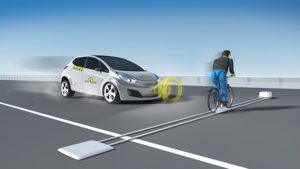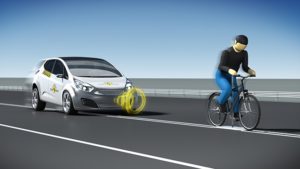The European New Car Assessment Programme (Euro NCAP) has developed a new crash test that measures how well a car senses and responses to bicycles. The test was developed in cooperation with the Dutch Ministry of Transport. Holland is famous for its bicycle culture, but that comes with a cost. Pedestrians, cyclists and motorcyclists accounts for almost half of the country’s road fatalities, and bicyclists’ deaths are on the rise.
To score high in the new test, vehicles have to be equipped with autonomous emergency braking (AEB) systems that include ‘bicyclist crash scenarios’. Euro NCAP is the first vehicle safety organization to run this kind of test. Detecting cyclists is technically far more difficult compared to detecting pedestrians, as their speeds are higher: car makers need to use sensors with a wider view, and the underlying computers have less time to decide whether to brake or not.


The test includes two scenarios: one in which the cyclist is crossing in front of the car, and one where the cyclist is traveling in the same direction as the car. During the test, a bicycle is mounted on a moving platform and a dummy cyclist is articulated to recreate the pedaling action of a human being. The score is the highest when a collision is completely avoided. In some cases, however, the AEB system will be unable to stop the vehicle completely; some points are given because any reduction in the speed of impact can have a significant benefit for the eventual outcome.
The first vehicle that underwent the new test was the 2018 Nissan Leaf EV, fitted with an ‘AEB-Cyclist’ system. The Leaf scored the maximum of five stars. The Leaf’s systems detected the bicycle in both scenarios. The Leaf is also equipped with an AEB system especially developed to detect pedestrians, and yet another AEB system especially developed for city traffic.
Dutch bicyclists can feel a little safer now…